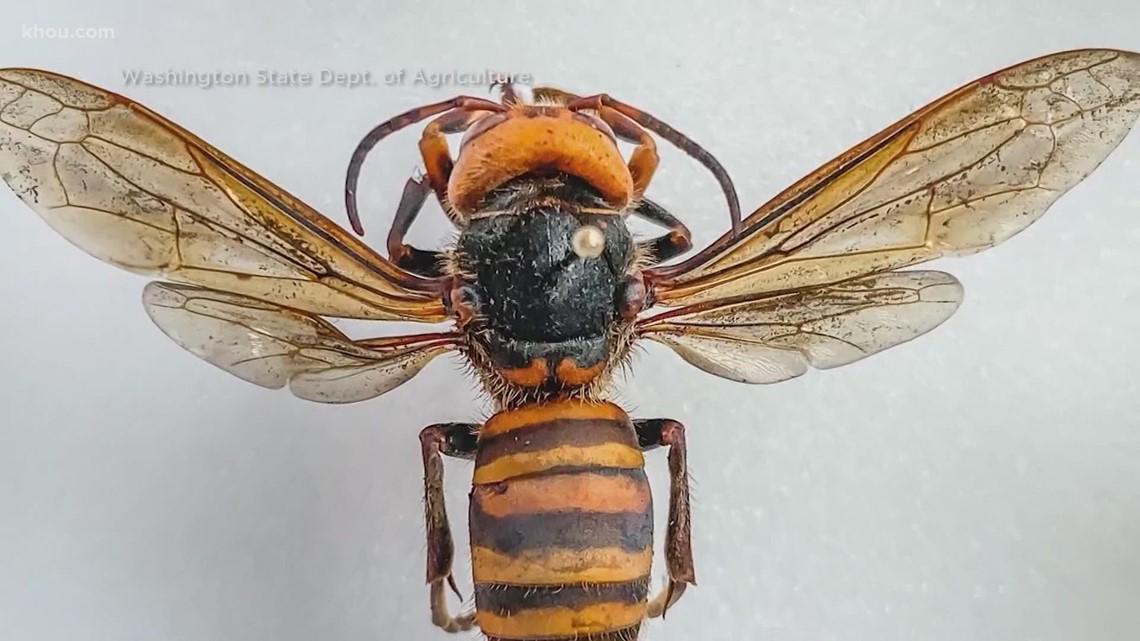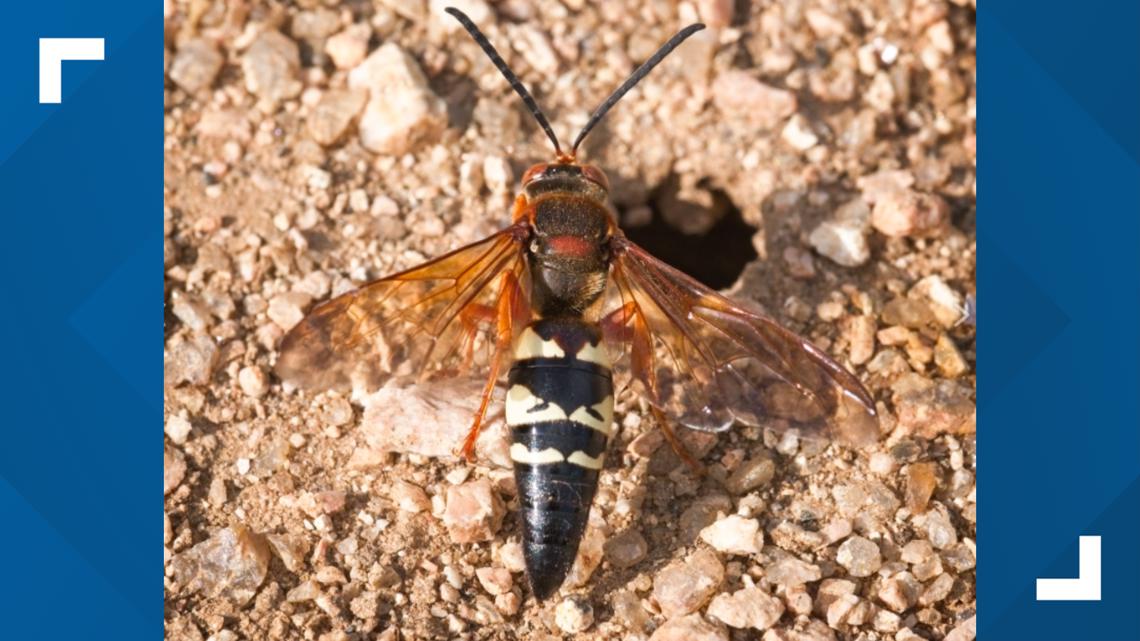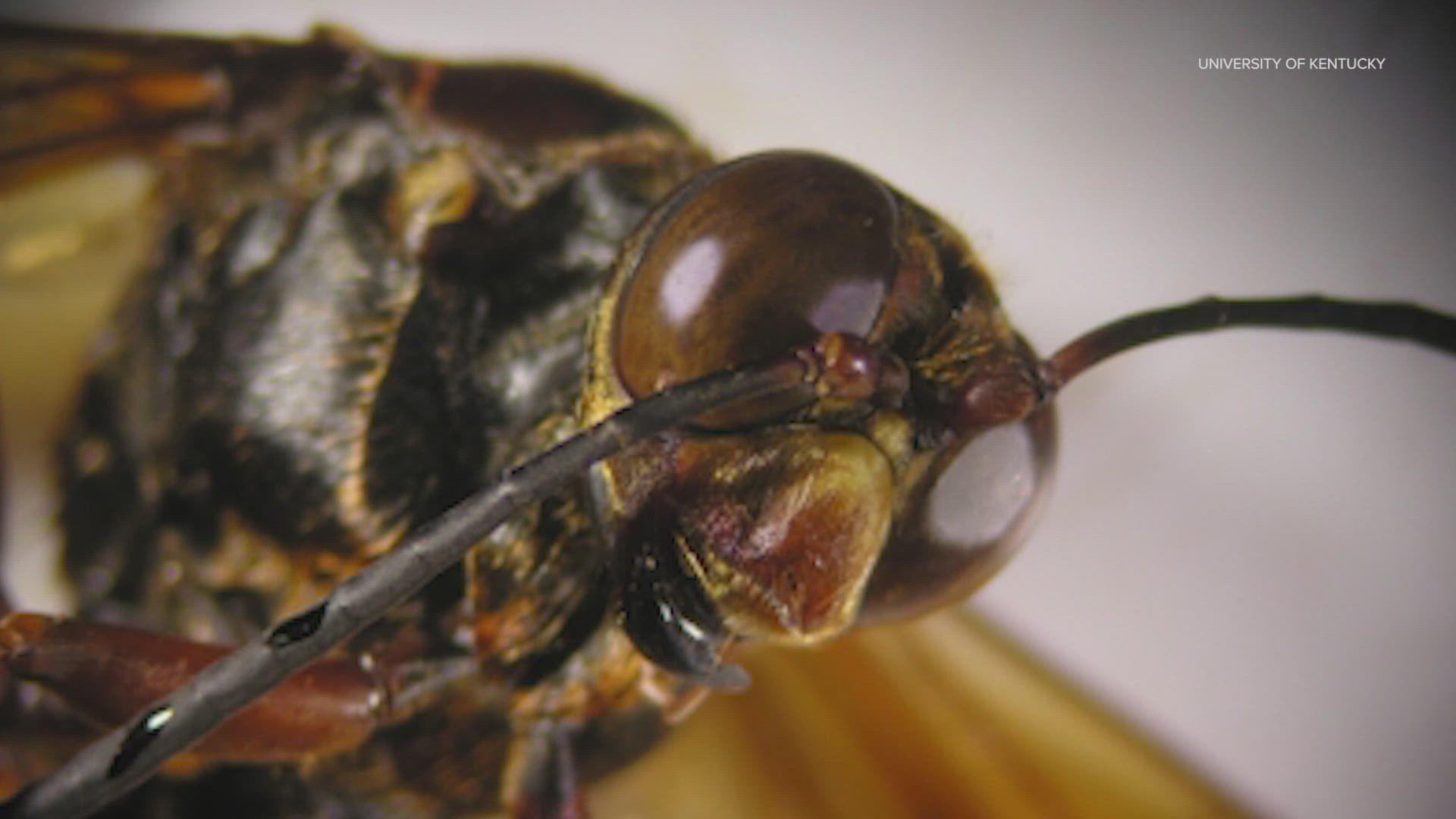HOUSTON — Large wasps spotted around Montgomery County recently are making people nervous, but experts say there's no need to worry -- they're not murder hornets.
The Montgomery County Texas A&M AgriLife Extension said they've been getting a lot of calls from residents who are mistaking the big wasps for murder hornets. But TAMU experts say they're probably seeing eastern cicada killers, which are common this time of year.
Editor's note: The above video originally aired in 2020.
The mistaken identity has happened every summer since the first murder hornets, also known as northern giant or Asian giant hornets, were spotted in Washington state in 2020.
“Northern giant hornets are not in Texas, and from reports, agencies in Washington state have done a very good job of controlling their numbers and preventing their spread,” entomologist Molly Keck said. “It would be a far leap for them to be in Texas.”
What is a murder hornet?
Murder hornets are native to Japan and South Korea and have only been found in parts of British Columbia, Canada and the northwestern corner of Washington state.
They were dubbed the murder hornet because they prey on bees and decapitate them. They can also wipe out local honeybee populations, which is essential for most fruit and vegetable crop production.
"They use their mandibles and they rip the heads off the worker bees and then they go on and feast on the pupa which are incubating and growing,” Nicole Temple with the Houston Museum of Natural Science told us in 2020. “So they take out the current population of bees and the next generation as well.”
They're fiercely protective of their nests but don't typically bother people or animals unless they're threatened. However, their painful stings can deliver seven times the amount of venom as a honeybee and be deadly to people who are allergic.
They don’t just sting. They can bite, too.
“It would feel like you’re getting pinched but it would be pinched by two little knives because they contract into your skin,” Temple said.
The initial concern in 2020 prompted Gov. Greg Abbott to request a task force be mobilized to prepare Texas against the hornet’s arrival. Four years later, there have been no confirmed reports of these hornets outside of Whatcom County, Washington.
Common characteristics
- The murder hornet is the world’s largest known hornet measuring 1.5-2 inches in length
- A head as wide as its shoulders, where the wings and legs are located, or wider
- Bright orange or yellow
- The thorax, or shoulder portion where the wings and legs are connected, is dark brown
- The antenna is dark brown
- It has a much smaller or pinched waist
- Smooth brown and orange stripes cover the abdomen


What is a cicada killer?
The large wasps are native to Texas and they usually start showing up in June when their favorite meal, the cicadas, emerges.
Male cicada killers are territorial and may try to chase off people or animals by dive-bombing or buzzing them. But the males can't sting and are not dangerous.
“Cicada killers can be a nuisance for a few weeks out of the year during the nesting season, but they are not a threat to us,” Keck said. “Females can sting but are very docile, and reports of stings are rare.”
Common characteristics
- Cicada killers are typically 1 to 1.5 inches in length
- The eastern cicada killer tends to be black and yellow
- Their head is narrower than the thorax
- The head and the thorax are typically the same color, a darker orange or brown color
- They have a pinched waist
- The easiest way to tell cicada killers apart from the murder hornets is the stripes on their abdomen. They are irregular, jagged and sometimes shaped like mountains
“I always ask people to look at the coloration and whether they see consistent, distinct stripes across the abdomen or a kind of lumpy, irregular marking on the abdomen,” said Robert Puckett, Ph.D., an associate professor and entomologist at TAMU. in “That irregular pattern is the dead giveaway that it is a cicada killer.”



